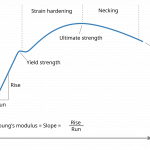Industry Standards
Below are key international standards related to impulse excitation and dynamic modulus measurements supported by GrindoSonic instruments:
ASTM C1259
Standard Test Method for Dynamic Young’s Modulus, Shear Modulus, and Poisson’s Ratio for Advanced Ceramics by Impulse Excitation of Vibration.
NF P18-414
Testing of Concretes — Non-destructive Testing — Measurement of the Dominant Resonance Frequency (for concrete specimens)
EN 14146
Natural stone test methods — Determination of the dynamic modulus of elasticity (by measuring the fundamental resonance frequency)
DIN 1048
Testing of hardened concrete — specifies methods for testing concrete specimens including static modulus of elasticity, strength, etc.
💡 Note: Due to copyright restrictions, these standards can only be accessed via their official publishers (ASTM, AFNOR, CEN, DIN).
Papers
Below are key publications demonstrating the use of impulse excitation for determining elastic properties such as Young’s modulus, shear modulus, and Poisson’s ratio:
The innovative impulse excitation technique for high-temperature mechanical spectroscopy
Recent developments in digital signal analysis have allowed substantial progress in the field of impulse excitation techniques (IET), i.e. the mechanical–spectroscopic analysis of ‘impulse excited’ resonant vibrations. The new IET-devices determine several impulse excited resonance frequencies simultaneously.
Glass microstructure evaluations using high temperature mechanical spectroscopy measurements
This paper compares the microstructures of several glasses by measuring the Young’s modulus and internal friction as a function of temperature, using the impulse excitation technique (IET).
High temperature properties of ZnO ceramics studied by the impulse excitation technique
This study reports on impulse excitation technique (IET) measurements up to 900 °C in air performed on various grades of ZnO ceramics, containing bismuth and antimony oxides as dopants. The IET provides dynamic elastic (E-modulus) and damping properties as a function of temperature.
Microstructure research of glasses by impulse excitation technique (IET)
The stiffness and internal friction (Q−1) of a CaO–Al2O3 SiO2 glass and an Na2O–CaO–SiO2 glass have been measured from room temperature to their respective glass transition temperatures (Tg) using the impulse excitation technique (IET).
💡 These works form the foundation of modern impulse excitation methods and the validation of GrindoSonic instruments.



